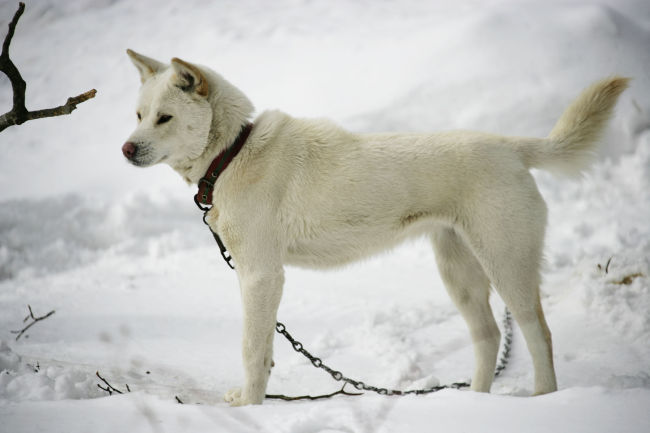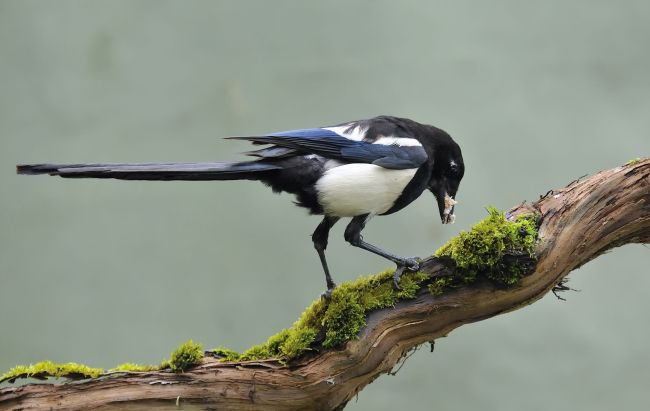Animals signify compassion, altruism in Korean folklore
By Claire LeePublished : April 13, 2016 - 20:48
When Kim Eun-ji was a child, her favorite part of the day was to have her mother read her “Gyeonwu and Jiknyeo,” a Korean folk tale about two lovers who were forced to live on opposite sides of the Milky Way. Their love had angered the heavenly king, as Jiknyeo, whose job was to weave clothes, and Gyeonwu, a cowherd, only wanted to spend time with each other and neglected their duties.
“But of course, they were allowed to reunite once a year,” the 28-year-old office worker said. “A flock of magpies would generously form a bridge for them to cross the Milky Way. The reuniting scene still remains one of my all-time favorite scenes.”
“But of course, they were allowed to reunite once a year,” the 28-year-old office worker said. “A flock of magpies would generously form a bridge for them to cross the Milky Way. The reuniting scene still remains one of my all-time favorite scenes.”

“Gyeonwu and Jikneyo” is just one of many Korean folktales that feature the compassion and benevolence of animals.
According to scholar Lee In-jae’s master’s thesis published this year, titled “A Study on the Animal Characters of Korean Traditional Fairy Tales,” 32.5 percent of some 400 Korean folk tales feature animal characters that play important roles in the narratives.
Very often animals appear as kind, altruistic beings that help protagonists when they are in danger or difficult situations.
“When we study traditional folklore, we can learn that Koreans had a very special relationship with the animals in their lives,” said Cheon Jin-gi, the director of the National Folk Museum of Korea.
“Many believed tigers were the gods of mountains. Magpies were believed to bring good news. Turtles represented good fortune and fecundity. In folklore, they are often portrayed as good spirits in animal form, who help those who face injustice committed by fellow human beings.”
One example is “Kongji and Patzzi,” a Korean folklore version of Cinderella. Kongji loses both her parents and lives with her stepmother and stepsister Patzzi. Whenever she is faced with impossible tasks, kind animals help her.
“Such stories were partly written to encourage readers to be kind to one another,” wrote scholar Lee in his thesis, which was submitted to the Busan National University of Education. “Animal characters were often portrayed as role models for human beings to follow.”
Cheon said Koreans paid close attention to animals and their characteristics.
“For example, Koreans noticed that magpies start to lose their feathers in July,” he said. “That’s how they started imagining that magpies must be losing feathers because they are forming bridges for the star-crossed lovers.”

Some of the most touching Korean folk stories involve dogs. During Korea’s Silla Dynasty (57 B.C.-935 A.D.), there was an old man named Kim Gae-in living in present-day Imsil, North Jeolla Province. He lived alone with his dog, whom he adored.
One day, he visited a nearby town and drank a lot with friends. On his way home, he passed out on some grass. While he was unconscious, his dog noticed that a bushfire had started nearby. The dog could not wake his owner up, and so it soaked itself in water from a nearby stream and extinguished the fire with its wet body. The dog died of burns, but saved Kim’s life.
When Kim woke up, he realized what his dog had done for him and cried bitterly. He buried the animal in a nearby sunny place, and stuck his walking staff in front of the grave.
The wooden staff eventually turned into a large tree after a few years, which later inspired villagers to name the region Osu, meaning a dog and a tree.
“I think Koreans shared much more space and time with animals in the old days,” said director Cheon. “They were more respectful of nature in general.”
In modern times, there is the true story of Baekgu, the legendary dog who traveled 300 kilometers to return to his first owner on Jindo Island, South Jeolla Province.
Baekgu, who was born in 1989 on Jindo Island, had been given away to someone else who lived in Daejeon in 1993. Yet the dog missed its initial owner too much and ran away, traveling for seven months by itself across Daejeon, Busan, Goseong and Haenam to finally reach Jindo Island.
Baekgu lived happily with its initial owner until 2000, dying at the age of 12. Its owner, Park Bok-dan, died in 2010 at age 94.
The touching story of Baekgu has been made into a number of children’s novels, as well as an animated film. In Jindo, there is a statue of Baekgu set up in 2009 to commemorate the dog’s bravery and loyalty.
Animals continue to play a big part in the daily lives of modern Koreans, appearing even in pop culture.
For example, public broadcaster SBS’ reality show “Animal Farm,” which features pet owners and their special bonds with their animals, has been popular since 2001. Some of its episodes feature dogs with behavioral problems who improve after therapy sessions with their owners.
Other TV shows, such as JTBC’s “Marie and I,” and Channel A’s “A Man who Feeds his Dog” also feature celebrities and other individuals who spend time with animals.
“Human beings show their real qualities when they are interacting with vulnerable and helpless animals,” said Lee Deok-geon, the director of “Animal Farm.”
“A kind person’s good nature really gets exposed (when they are with animals). And it’s the same for those with unkind nature.”
Director Cheon said some Koreans still perform spiritual rites for animals. For example, Geumgang-sa, a Buddhist temple in Geojedo Island, South Gyeongsang Province, performs special religious ceremonies for spirits of dead animals who were killed by road accidents. “We Buddhists believe in reincarnation,” said Ven. Seongwon, who heads the temple. “The ceremonies are to help the souls of the animals acknowledge their death and give blessings for their next lives.”
This is the second installment in a series of articles that look at South Korea’s pet culture and industry – Ed.
By Claire Lee (dyc@heraldcorp.com)









![[Hello India] Hyundai Motor vows to boost 'clean mobility' in India](http://res.heraldm.com/phpwas/restmb_idxmake.php?idx=644&simg=/content/image/2024/04/25/20240425050672_0.jpg&u=)








